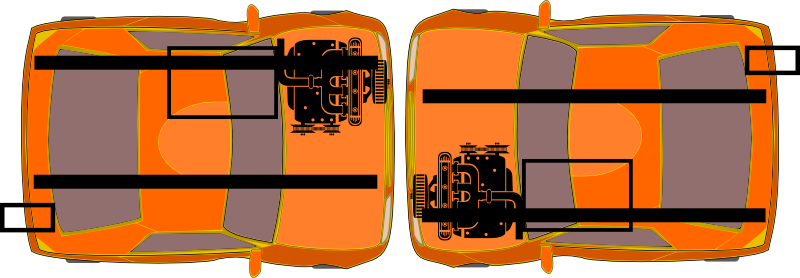A collision of two identical cars at equal speed (frontal crash) or the same car with the same speed crashing through a wall? The first case I see it would double the impact, but also it will absorb the energy into the other car structure, otherwise, in a solid and rigid wall, all the energy would come back to the vehicle.
“Same car with the same speed…” are we talking absolute speed or speed relative to collision object? Two cars each traveling 50km/h hitting head on VS one car travelling at 50 or 100 km/h hitting an ideal wall?
- The question says “crashing through a wall” yet it also says “a solid and rigid wall”. I suspect you meant “into” rather than “through”, but it would be good to know for sure which you really wanted. add a
From the point of view of the driver of a car, impacting another car is about as bad as crashing against an ideal wall (a wall with zero deformation whatsoever).
If there were a plane reflection between the two cars, then vs. Car would be exactly equal to vs. Wall (the contact points between both cars would all be on the same plane, due to reflection, so each car could be considered a wall for the other). But this plane reflection does not exist:

What we have instead is a 2-fold rotational reflection.
Let’s say the left part of the car is heavier than the right part. The left and right parts will get crushed differently, with the left part of each car going further than if there had been an immovable wall. Heavy parts of each car will slide beside each other, with a lot of the energy absorbed by steel deformation, and a longer distance between point of impact and final point, thus lesser deceleration. In this scenario, if you happen to sit on the heavy side you are lucky, but if you happen to sit on the light side it might be worse than a wall.
Also, rather than all forces having the same direction, some of the energy will be converted into rotation, which can be either a good or bad thing depending on where you sit.
Finally, cars have a few hard structural beams (or parts that can be considered as beams) and most of the rest is softer. If hitting a wall, deceleration is immense as soon as a beam touches the wall. If hitting another car, the beams will probably enter the other car’s soft parts. Here again, distance between point of impact and final position will be longer, thus a less violent deceleration. This is especially true at very high speed, with beams of each car piercing through most of the opposite car.
All in all, crashing into an ideal wall is probably a bit worse than crashing into another car, but better drive safely and avoid crashes 🙂